Summary of January 2025 National ECW Board Meeting
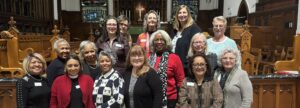 The National ECW (NECW) was blessed to be able to spend time with the Diocese of Alabama ECW Board while in Birmingham for our January 2026 board meeting. They joined the NECW for a tour of the 16th Street Baptist Church, hosted dinner, and then provided transportation to the Cathedral for the Advent for Sunday Services. The board had the opportunity to visit the Civil Rights Institute on Martin Luther King Jr. Day. The board also had three productive days of board meetings.
The National ECW (NECW) was blessed to be able to spend time with the Diocese of Alabama ECW Board while in Birmingham for our January 2026 board meeting. They joined the NECW for a tour of the 16th Street Baptist Church, hosted dinner, and then provided transportation to the Cathedral for the Advent for Sunday Services. The board had the opportunity to visit the Civil Rights Institute on Martin Luther King Jr. Day. The board also had three productive days of board meetings.
The next board meeting is scheduled for: May 1-5, 2025 – Province VI – Billings, Montana.
Below is a summary of current activities by the NECW.
The UTO submitted a motion to the Executive Council to change the funding allocation derived from the Wright Trust Fund to a 50/50% split between the UTO and ECW in 2023. In response to this the NECW board has submitted a motion to the Executive Council asking that all Wright Legacy Trust Fund monies be allocated to the NECW. The ECW notes that UTO currently holds more money in their trust fund coffers and receives more annual income for administrative expenses than the ECW. It is also noted that in April 2024 Executive Council approved UTO bylaw changes to include all genders and UTO now holds itself to be a ministry of the whole church and is no longer an exclusively women’s ministry. The Wright Trust is to be applied to the use of official women’s organizations, and UTO is no longer a women’s ministry organization per their current by-laws. Currently the Wright Trust Fund dividends are split between the ECW at 79% and the UTO at 21%.
The following motions were approved:
To allocate $500 for a sponsorship for the Association of Episcopal Deacons Conference.
The NECW board voted to donate $1000 to Sawyerville of Birmingham, AL. The mission of Sawyerville, a ministry of the Episcopal Diocese of Alabama, is to create opportunities for children and youth in Hale County through free summer programs, mentoring, and scholarships. All of their programs work to serve God, broaden the horizons of participants and staff, improve race relations in Alabama, and enrich the lives of those living in poverty.
In response to the wildfires in Southern California, the NECW board voted to donate $1000 to the Diocese of Los Angeles One Body One Spirit annual appeal.
After attending Sunday services at the Cathedral of the Advent in Birmingham the NECW board voted to donate $100 to the church.
The board voted to advocate and address issues of murdered and missing indigenous women as our Social Justice initiative for the year.
The NECW will pursue completion of a history of Triennials that was started by the 2018-2024 President and to investigate publishing pricing.
At the invitation of The Diocese of Taiwan in Taipei, President Lisa Bortner and Province VIII Representative Ginny Guzman-Walsh will attend the Taiwan Diocesan Convention in May for the purpose of creating goodwill and understanding between the Diocese and the ECW ministry.
The NECW Social Justice Chair along with the National ECW President will be representing the National ECW at the NGO United Nations Commission on the Status of Women in New York City from March 10-16, 2025. Other members of the board will be attending the meeting at their own expense.
The Ad Hoc Creation Care and Environmental Committee’s job description for the Member at Large position was approved. The position will be advertised and chosen in the upcoming months. Look for more information on this in the ECW News Blasts, Facebook and on our website.
The board voted to create two scholarship programs. The first is to be called Women in Theology and will be awarded to women pursuing a master’s degree in theology in the amount of $2500. The second scholarship is to be called Women in Healing Professions and will be awarded to a woman pursuing an advanced degree in a healing profession in the amount of $2500. The criteria for the scholarships and applications are to be released in June 2025.
The NECW Virtual Event Series will continue with the next session being held on April 5 on human trafficking and then the following event scheduled for July 12 on prison ministries.
During lent the NECW will promote Thursdays in Black. The World Council of Churches website explains: “The campaign is simple but profound. Wear black on Thursdays. Wear a pin to declare you are part of the global movement resisting attitudes and practices that permit rape and violence. Show your respect for women who are resilient in the face of injustice and violence. Encourage others to join you.”
The NECW chose their 2027 Triennial theme: “Women at the Well: Faith in Action”.
The NECW continues to encourage all ECWs to register and be counted. You may register your ECW on our website at ecwnational.org.

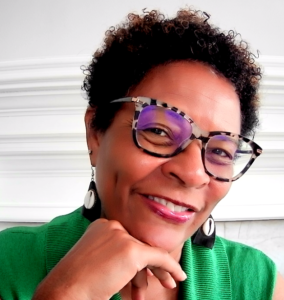 Cuando cada Oración no comienza con el “Padre Nuestro” o culmina con “Amen”
Cuando cada Oración no comienza con el “Padre Nuestro” o culmina con “Amen”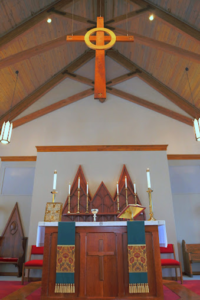 The Rev. Josiah Rengers
The Rev. Josiah Rengers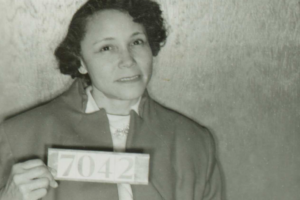 Excerpt from National Museum of African American History & Culture
Excerpt from National Museum of African American History & Culture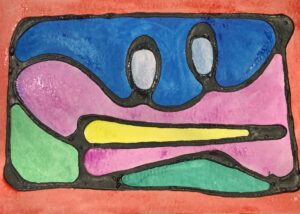 En una reunión reciente de ECW (Grupo de Mujeres de la Iglesia Episcopal) de la Diócesis del Oeste de Texas, la Reverenda Beth Wyndam de la Iglesia de San Nicolás en Bulverde, Texas, charlo sobre su pasión por orar a color. Dios la llamó a plantar la semilla de su pasión en una iglesia fundamentada en el gozo. Confiando en dicho júbilo, La Reverenda abrazó la gracia de la imperfección, cultivó la creatividad y encontró a Dios de diversas maneras. En consecuencia, comenzó a enseñar cómo orar a colores para aumentar la fe.
En una reunión reciente de ECW (Grupo de Mujeres de la Iglesia Episcopal) de la Diócesis del Oeste de Texas, la Reverenda Beth Wyndam de la Iglesia de San Nicolás en Bulverde, Texas, charlo sobre su pasión por orar a color. Dios la llamó a plantar la semilla de su pasión en una iglesia fundamentada en el gozo. Confiando en dicho júbilo, La Reverenda abrazó la gracia de la imperfección, cultivó la creatividad y encontró a Dios de diversas maneras. En consecuencia, comenzó a enseñar cómo orar a colores para aumentar la fe. Escrito por Lisa Bortner
Escrito por Lisa Bortner